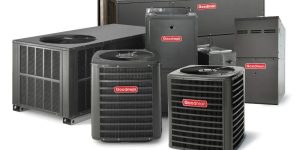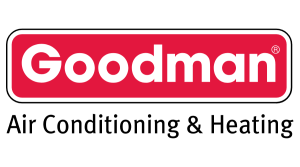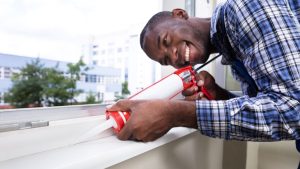How Much Does an AC Unit Cost? A Complete Guide to Choosing and Pricing Your Next Cooling System
Installing a new AC or replacing an old one involves several costs that may seem complex. The cost of an air conditioning unit is based on certain features, namely, type, size, efficiency, installation costs, and sometimes even a specific brand. In Summers Comfort Heating & Air, we understand that an investment in a new AC is huge, that’s why we are here at this stage to help you understand how the pricing works and how to find the most suitable system for your house and the budget.
In this guide, we will go over the types of AC, their suitable range of prices, their installation and other costs, practically everything that you need to know in advance when you go out looking for a new cooling system.
Factors That Affect the Cost of an AC Unit
In most cases, the price range of AC units starts from dollar hundreds to dollar thousands without a fixed base. Below are some most common factors that will significantly change the amount you are expected to spend:
Type of AC Unit: The pricing of air conditioning units vary because there are different types such as, central air conditioner, ductless mini split, window units among other types.
Size and Cooling Capacity: The more the powerful the AC unit, the bigger the space it will effectively cool hence higher costs.
Energy Efficiency: As the Seer rating increases, the unit becomes more efficient but costs more at the initial purchase.
Brand and Quality: High cost brands come with higher prices but also come with good warranties and last longer.
Installation Costs: Central and ductless systems need professional installation and the labour cost greatly increases the overall price.
Additional Features: Add ons two the cost are smart functions, variable speed compressors, and improved air filtration systems.
Types of AC Units and Their Costs
Let’s look at the most popular types of air conditioning and their price ranges:
1. Central Air Conditioning Units
One of the most preferred cooling systems in residences today is the central air conditioning unit. It works by cooling the air somewhere in a central spot and piping it out through duct work around the house.
Unit Cost : between $2,500 to $7,500 depending on the size and the efficiency of the unit
Installation Cost : between $1200 to $3000.
Total Cost : $3700 to $10500.
Pros:
Effective to cool entire houses.
Usually less electrical consumption costs in the long run.
Smart thermostats can control the unit.
Cons:
Ductwork is needed and that increases the price if it is not available in the house.
More expensive than other methods.
Central air conditioning is better for large structures or people that want to cool their homes in a more efficient way using one single unit. It is most suitable for homes that have ducts, because the addition of ductwork raises these installation costs significantly.
2. Ductless Mini-Split Systems
A ductless mini-split is a cost-effective and energy-efficient option that requires no ducts. It consists of an outdoor unit and one or more indoor air handlers and can maintain the temperature in separate rooms and areas.
_unit cost:_ 1,500 to 5,000 (per zone) _Installation Cost:_ 500 to 2,500 _total Cost:_ 2000 to 7500 per zone _Pros:_ Ductless, hence applicable to old houses or extensions No need for duct works as zoned cooling allows controlling of temperature in particular areas Consumed energy is relative low as a general observation _Cons:_ It becomes more costly for larger homes which require multi-zones The installation of indoor units may be prominent and therefore create an eye sore to the interior furnishing. Ductless mini-splits are best suited for homes that do not have duct work or for homeowners who want to control the temperature in specific rooms. They are however expensive if used for many zones, although they serve to achieve cost benefits over time due to high energy efficiency. _3. Window Air Conditioners_ These are standard window units found in most small rooms and apartments as they provide cooling in a single room that is directly installed into a window.
Unit cost: From $150 up to $800
Installation cost: Mostly only the cost of installing them
Total: 150$ to 800$
Pros:
Lower upfront payment
Installation generally is straightforward and can be self protected
Can be easily removed and relocated (common practice)
Cons:
Only provide a cooling effect on a single room
In comparison to a central air system or a ductless unit, they are relatively less efficient.
Interferes with the window space and is sometimes unattractive to look at
Although window air conditioning system’s upfront costs are low, they’re much more effective at areas with limited requirements. They aren’t an option for entire residence but for apartment use or to cool down single rooms, they do the job nicely.
4. Portable Air Conditioners
Portable air conditioners fall in the same category as window air conditioners but they are portable. They are suitable for cooling down a specific area in short amounts of time.
Unit cost: ~ $200 to 700
Installation cost: Low and Don’t need to be professionally installed
Total: ~ $200 to 700
Pros:
They can be freely moved around between rooms.
They don’t have to be fitted into a window enclosure.
Ideal for short-term cooling of spaces.
Cons:
They work in cooling down only a single area at a time
Also less efficient than most types of AC unit designs available on the market currently.
May make some noise and take space away from the ground level.
Portable air conditioners are great for unideal spaces for long periods of time when need arises to cool them down temporarily. They’re not efficient, as one would hope in all other applications making them best for smaller rooms.
Additional Expenses That Should Not Be Ignored
In addition to the costs of the unit and installation, there are a few other costs that may increase the total costs when getting a new AC system:
1. Duct Work
Adding ductwork to your home can be relatively costly if none exists. Adding ductwork can cost anywhere from $2,000 to $5,000 or even higher, based on the square footage of your house and the amount of ducting needed to install. You may still have to do repairs or at least some adjustments even if you do have ductwork.
2. Electrical expenditures
You may be faced with the situation where the electrical wiring of the home will require upgrading in order to support the new AC unit – this could cost anywhere from $300 to $1,500 dollars. Some electric upgrades may be necessary to accommodate the unit’s wattage, such as a circuit breaker or wires.
3. New Thermostat
Installing a smart thermostat may provide a reasonable expense but it gives several benefits in future usage as it allows to set certain parameters in the AC for more cost-effective cooling strategies. It costs about $200 to $250 for a basic programmable thermostat. Gas burners in ductless air conditioning range from $100 to $250, while smart thermostats cost $200 to $500.
Permits and Inspections
You might have to get some permits or get your new AC system inspected, according to local authorities. The location affects costs but they do range from $100 to $500.
Maintenance Plan
In order to ensure that the AC unit functions properly and serves you for a long period of time, maintenance plans are essential. Such maintenance plans have an annual fee that ranges between $150 to $500 and come with provisions for routine assessment of the unit, cleaning, and occasional repairs.
SEER Ratings and Energy Efficiency
For air conditioner units, the one factor one ought to evaluate would be the Seasonal Energy Efficiency Ratio (SEER) rating. Energy Efficiency Ratio calculates how effectively the air conditioner uses energy; units with a high SEER rating use less energy over a number of years which translates into cost savings.
The following chart summarizes the differences in SEER rating and how those relate to the price that a unit would levy:
Standard Efficiency (SEER 13–15): Lower initial investment, average efficiency.
High Efficiency (SEER 16–20): higher initial cost, more savings in energy bills in the future.
Ultra High Efficiency (SEER 21+): Most expensive, for the person that wants the best efficiency and savings over a long time.
It is true that with high SEER units, there might be an additional purchasing cost, but, with the reduction of monthly energy expenses, the savings can accumulate over time. Most homeowners believe that the cost of investing in a higher SEER unit is worth it in the long-term.
Warranty and Lifespan
It is relevant to mention the warranty that comes with your AC unit as another feature. Standard warranties are available for 5 to 10 years on parts and additional warranties can be purchased from some manufacturers. You can potentially cut down ability costs, should you need to make repairs or replacements, so that is something worth looking at when shopping around for an AC unit.
Average life expectancy:
Central AC: 15 to 20 years
Ductless Mini-Split: 10 to 15 years
Window AC: 8 to 10 years
Portable AC: 5 to 10 years
Proper care of the unit of the AC installed in your house can help avoid unit replacement costs that could arise because of downtime.
How to buy the most suitable AC Unit for your house
Something that is of illuminating advice is that a conclusion can be hard to come Regards but some factors to consider include the size of one’s house. Bigger houses will need bigger units and as such a load calculation by a professional can assist in getting the right cooling capacity for your area.
If the climate gets hot where you stay, then it might be substantially wiser to spend some money on a high-efficiency unit because over time, energy costs will be low.
Budget: Prepare a budget that factors in the unit, installation, and any other costs that may come up.
Energy Efficiency: More savings could be reaped over the long-term if your units have higher SEER ratings as this improves efficiency.
Comfort Preferences: A ductless mini-split may prove ideal for those who prefer zoned cooling. Central air conditioning is a good option for those seeking comfort all through their homes.
Get Professional Help From Summers Comfort Heating & Air
When selecting and installing AC units, expert services will be required such that clients become satisfied with the final output.
Ready to Chill? Contact Summers Comfort Heating & Air!
Is your AC blowing more hot air than your Aunt Linda at family dinners? Or maybe your heater’s on a coffee break just when winter hits? Don’t sweat (or shiver!)—give us a call! At Summers Comfort Heating & Air, we’re ready to bring the cool back to your summer and the cozy to your winter. So, if your HVAC’s acting up, let us take it from “meh” to “ahhhh.” Contact us today, and let’s get your comfort back on track!




